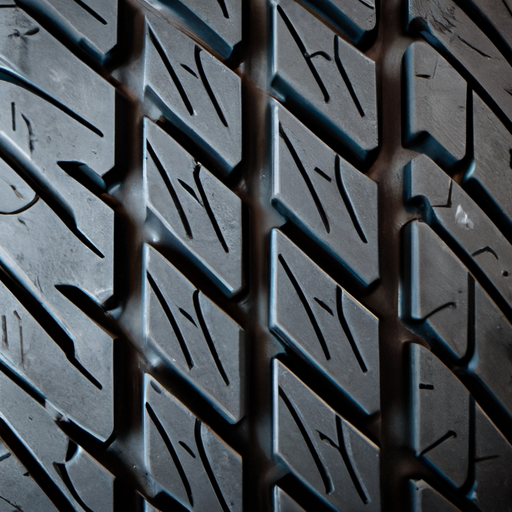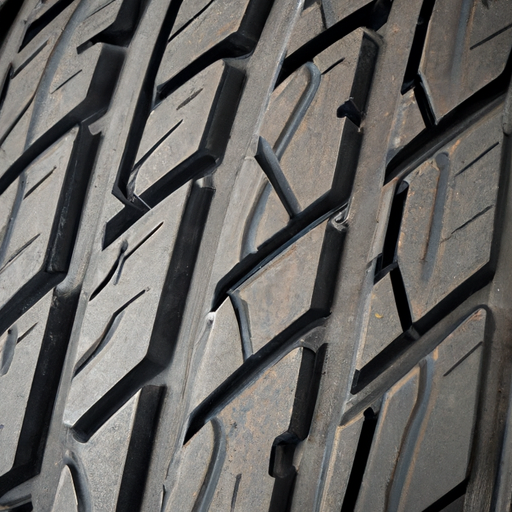Have you ever wondered how the width of your wheels can affect the performance and wear of your tires? It turns out that this seemingly small factor can have a big impact on how your vehicle handles, the lifespan of your tires, and even your fuel efficiency. In this article, we’ll explore the fascinating relationship between wheel width and tire performance, shedding light on why it matters and what you need to consider when choosing the ideal width for your wheels. So, fasten your seatbelt and get ready to discover the hidden secrets behind wheel width and its impact on your driving experience.
What is wheel width?
Definition of wheel width
Wheel width refers to the measurement of the distance between the inner edges of the wheel rim. It is an important factor to consider when selecting wheels for your vehicle. The width of the wheel affects various aspects of tire performance, including handling, fuel efficiency, and tire wear.
Measuring wheel width
Wheel width is typically measured in inches. To measure the wheel width, one should start by placing a ruler or tape measure across the inside edge of the wheel rim. The measurement should be taken from the inner edge of one wheel flange or bead seat to the inner edge of the opposite flange or bead seat. This measurement will provide the accurate wheel width.
Importance of wheel width
Effects on tire performance
Wheel width has a significant impact on tire performance. The width of the wheel determines the amount of tread that comes into contact with the road surface. This affects the handling characteristics of the vehicle, including traction, grip, and stability during acceleration, braking, and cornering. A wider wheel width generally results in enhanced traction and improved cornering stability, while a narrower wheel width can improve fuel efficiency and reduce rolling resistance.
Effects on tire wear
Wheel width can also affect tire wear. The width of the wheel determines the size and shape of the contact patch between the tire and the road. If the wheel width is too narrow, the contact patch may be smaller, resulting in uneven tire wear and increased risk of sidewall damage. Conversely, if the wheel width is too wide, the contact patch may be wider, leading to accelerated center wear and reduced puncture resistance.

Factors to consider when selecting wheel width
Vehicle type and purpose
The type and purpose of your vehicle play a crucial role in determining the appropriate wheel width. Different vehicles have different weight distributions and load capacities, which must be considered when selecting the wheel width. For example, performance cars may benefit from wider wheels to improve traction and handling, while smaller vehicles may prioritize fuel efficiency and opt for narrower wheels.
Tire size
The size of your tires is another essential factor to consider when selecting wheel width. The wheel width should be compatible with the recommended tire size. The tire manufacturer’s guidelines typically specify a range of compatible wheel widths for each tire size. It is important to stay within this range to ensure optimal tire performance and prevent premature wear or damage.
Driving conditions
Driving conditions also influence the choice of wheel width. If you regularly encounter wet or slippery road conditions, wider wheels may provide better traction and reduce the risk of hydroplaning. On the other hand, if you primarily drive on smooth, dry roads, a narrower wheel width may be sufficient for your needs.
Aesthetics
While performance and practicality should be the primary considerations when selecting wheel width, aesthetics can also play a role. Wider wheels can give the vehicle a more aggressive and sporty appearance, while narrower wheels can provide a sleek and understated look. It is essential to strike a balance between aesthetics and performance to ensure that the chosen wheel width meets your requirements.
Effects of narrow wheel width
Improved fuel efficiency
One of the advantages of narrower wheel widths is improved fuel efficiency. A narrower wheel creates less rolling resistance, which means that less energy is required for the tire to roll, resulting in improved fuel economy. This can be particularly beneficial for vehicles that prioritize fuel efficiency, such as hybrid or electric cars, as it helps maximize their range.
Reduced rolling resistance
In addition to fuel efficiency, narrow wheel widths also contribute to reduced rolling resistance. With a narrower wheel, the tire has less surface area in contact with the road, resulting in less friction and resistance. This can lead to smoother and more effortless acceleration and deceleration, as well as reduced strain on the engine and drivetrain.
Narrower contact patch
Narrower wheel widths also translate to a narrower contact patch between the tire and the road. While this can reduce rolling resistance and improve fuel efficiency, it may also result in a smaller contact area. A smaller contact patch can have implications for traction and grip, especially in wet or slippery conditions. It may also increase the risk of sidewall damage, as the tire’s sidewalls are more exposed.
Increased risk of sidewall damage
One of the potential drawbacks of narrow wheel widths is an increased risk of sidewall damage. With less protection from the wheel and a smaller contact patch, the sidewalls of the tire are more susceptible to curb damage or impacts from potholes and debris on the road. This can lead to sidewall bulges, cuts, or punctures, which can undermine the tire’s structural integrity and safety.

Effects of wide wheel width
Enhanced traction and grip
One of the primary advantages of wider wheel widths is enhanced traction and grip. With a wider wheel, a larger portion of the tire’s tread comes into contact with the road, providing increased surface area for better grip. This improves traction during acceleration, braking, and cornering, resulting in improved overall performance and handling.
Improved cornering stability
Wide wheel widths contribute to improved cornering stability. The wider contact patch generated by wider wheels allows for better distribution of lateral forces during cornering. This reduces the risk of tire slippage and improves the vehicle’s ability to maintain control and stability while navigating turns or curves.
Wider contact patch
Wide wheel widths result in a wider contact patch between the tire and the road. This provides a larger surface area for the tire to interact with the road surface, distributing the vehicle’s weight more evenly. A wider contact patch can enhance overall grip and traction, improving the vehicle’s performance in various driving conditions.
Reduced puncture resistance
One potential drawback of wide wheel widths is reduced puncture resistance. A wider contact patch exposes more of the tire’s sidewalls to potential hazards on the road, such as nails or sharp objects. This increases the risk of punctures and can lead to a compromised tire, requiring repair or replacement.
Increased risk of hydroplaning
Wide wheel widths can also increase the risk of hydroplaning. When driving on wet roads, a wider contact patch can lead to a higher volume of water being trapped between the tire and the road surface, decreasing the tire’s ability to maintain contact with the road. This can result in reduced traction and control, potentially leading to hydroplaning, where the vehicle skims on the surface of the water.
Optimal wheel width for different tire sizes
Narrow tires
For narrow tires, it is generally recommended to use a narrower wheel width. This helps maintain the tire’s intended shape and ensures optimal performance. Using a wider wheel width on narrow tires may result in a less desirable sidewall profile, affecting handling and responsiveness.
Standard tires
For standard tires, the recommended wheel width usually falls within a specific range. The wheel width should be chosen based on the manufacturer’s specifications to ensure compatibility and maximize tire performance. It is important to strike a balance between the desired tire profile and the appropriate wheel width.
Wide tires
Wide tires usually require wider wheel widths to achieve their full potential. The wider wheel allows the tire to maintain its intended shape, ensuring proper sidewall support and preventing undesired bulging or distortion. Using a narrower wheel width on wide tires may compromise performance, handling, and overall safety.

Balancing performance and aesthetics
Finding the right balance
When selecting wheel width, it is essential to strike a balance between performance and aesthetics. While wider wheels may offer improved traction and handling, they may also have drawbacks such as reduced fuel efficiency or increased risk of hydroplaning. Narrower wheels may enhance fuel efficiency but could compromise grip and stability. Assessing your specific needs and priorities will help you find the right balance between performance and aesthetics.
Considerations for aftermarket wheels
If you are considering aftermarket wheels, it is crucial to consider the impact of wheel width on tire performance and wear. Aftermarket wheels come in various widths, and selecting the appropriate width for your desired tire size should be a priority. Consulting with knowledgeable experts or professionals can provide valuable guidance in selecting the right aftermarket wheel width for your specific vehicle and tire combination.
Impact on tire wear
Uneven tire wear
Wheel width can significantly impact tire wear. Using an incorrect wheel width for your tire size can result in uneven tire wear. This can manifest as irregular wear patterns across the tread, leading to premature tire replacement. To ensure even wear, it is essential to select a wheel width within the recommended range for your tire size.
Shoulder wear
Using a wheel width that is too narrow for your tire size can contribute to increased shoulder wear. When the tire is not properly supported by the wheel, excessive stress is placed on the tire’s shoulders during cornering or abrupt maneuvers. This can result in accelerated wear on the tire’s outer edges, compromising both performance and safety.
Center wear
On the other hand, using a wheel width that is too wide for your tire size can lead to accelerated center wear. In such cases, the tire’s center area is subjected to increased pressure and friction, causing faster wear in this region. Excessive center wear can negatively impact handling and traction, reducing the tire’s overall lifespan.
Camber wear
Incorrect wheel width can also contribute to camber wear. Camber wear refers to uneven tire wear across the tread caused by improper wheel alignment. If the wheel width does not match the recommended width for your tire size, it can affect the tire’s alignment and lead to camber wear. Regular wheel alignment checks and adjustments are crucial to prevent this type of wear.

Rotating tires and wheel width
Importance of regular rotation
Regardless of wheel width, regular tire rotations are essential to promote even wear and maximize tire lifespan. Rotating the tires involves moving them to different positions on the vehicle to ensure that each tire wears evenly. This process helps to equalize the wear on all tires and extends their overall life.
Effect of wheel width on rotation pattern
The wheel width can impact the rotation pattern for your tires. When rotating tires, it is important to consider the specific wheel width and tire size. Some vehicles may have staggered wheel widths, with wider wheels in the rear and narrower wheels in the front. In such cases, tire rotation patterns need to be adjusted accordingly to account for the different wheel widths.
Conclusion
In conclusion, wheel width plays a crucial role in tire performance and wear. The appropriate wheel width should be selected based on factors such as vehicle type and purpose, tire size, driving conditions, and the desired balance between performance and aesthetics. Narrower wheel widths can improve fuel efficiency and rolling resistance but may result in a smaller contact patch and increased risk of sidewall damage. Wider wheel widths can enhance traction and grip but may reduce fuel efficiency and puncture resistance. Achieving the right wheel width for your tires is essential to ensure optimal performance, even tire wear, and maximize the lifespan of your tires.


